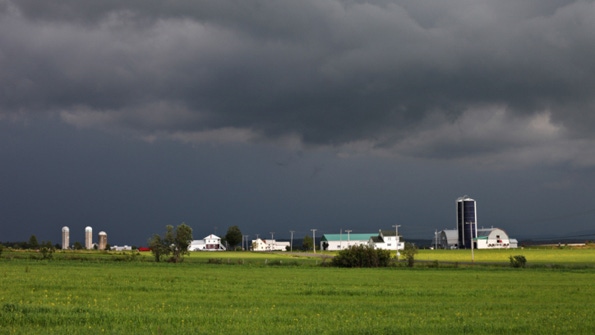
If you weren’t watching closely, you might have missed it. But in the midst of the huffpuffery and grandiloquence of the fiscal cliff debate was a very important kernel of legislation that was hastily stripped of reform, tacked onto the tax bill, and desperately shuttled through the House and Senate. It was about food. What we eat.
Congress has been putting off its reiteration of the farm bill—the omnibus ag package that’s reevaluated every five years—since the fall of 2012, when it expired, and has delayed it once again. The fiscal deal approved by Congress late on New Year’s Day also instituted a nine-month carryover on all existing farm subsidy programs, essentially extending the 2008 farm bill until Sept. 30, 2013.
The extension has left numerous growers’ organizations, environmental groups, and the heads of the Senate and House Agricultural Committees furious. Sen. Debbie Stabenow (D-MI), head of the Senate Ag Committee, said this in a statement: “Rather than embrace the Senate’s bipartisan farm bill which cuts $24 billion in spending and creates certainty for our agriculture economy, Sen. McConnell insisted on a partial extension that reforms nothing, provides no deficit reduction, and hurts many areas of our agriculture economy.”
All 2012 plans laid out by Congressional committees have been mooted by the extension, meaning that reformers are back to the drawing board when it comes to revising wasteful subsidies and promoting sustainable agriculture. Here’s Bloomberg:
The top Republicans and Democrats on both congressional agriculture committees had pushed for an extension that contained elements of legislation they had backed last year, including a new dairy program intended to stabilize prices for the boom-or-bust industry. That plan, which House Speaker John Boehner blasted as worse than “Soviet-style” economic management, was stripped from the fiscal-cliff deal.
In fact, the only leverage ag lawmakers had to push for any attention was the need to avert a potential “dairy cliff.” Had the extension not passed, dairy subsidies would have reverted back to a 1949 farm law. Here’s Politico:
Under the ‘49 law, the Agriculture Department is required to begin buying up dairy products at a rate of $38.54 per hundredweight, more than double the prevailing price today. No one truly knows the immediate impact, but the threat of $6 to $7-a-gallon milk prices brought President Barack Obama off the sidelines last week and helped to drive the last-minute dealing alongside taxes.
So we beat back the dairy cliff and consumers are safe from high milk prices (although considering last year’s drought and cattle cull, a $6 gallon of milk is not out of the realm of possibility), but what about other programs in need of revision?
Especially for organic agriculture, an industry that is struggling to keep up with exploding demand with a shortage of new farmers, the future seems more uncertain. The bill extension includes discretionary, not mandatory, funding of important organic agriculture programs, including the organic data initiative, organic research and extension initiative, and certification cost-share, and it delays the possibility that organic could be recognized as a unified commodity class in order to implement a much-needed research and promotion order. And while all the talk on Capitol Hill swirls around spending cuts, the chances for organic programs to receive more appropriations in a new five-year bill seem slim to nil.
Grist’s Twilight Greenaway sums the issue up well: “The timing is ironic, of course, because more and more Americans now want to know where their food comes from. But most of us still have very little voice when it comes to the larger terms that control how that food is produced.”
There’s a reason public opinion of Congress is so abysmal, and now you can taste it.
About the Author(s)
You May Also Like




